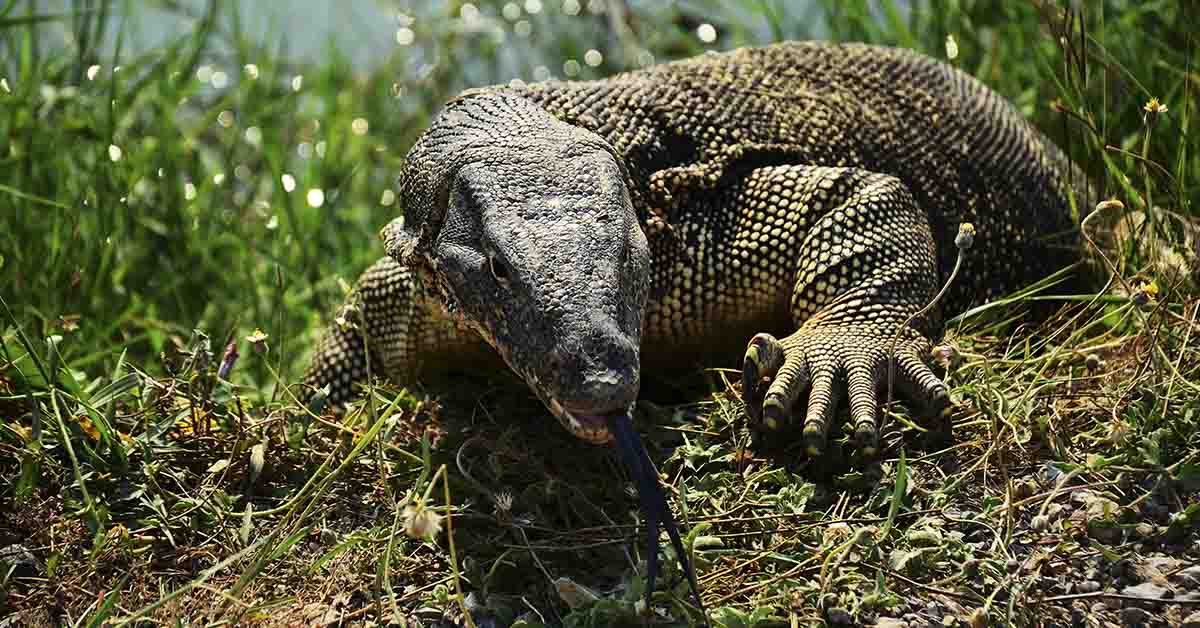Brace yourselves: This is likely one of the strangest crimes you have ever heard of. Indian authorities have arrested four men for gang-raping, killing, and then eating a monitor lizard. This large reptile is an endangered species and is protected in India. It is illegal to hunt and kill them, let alone rape one. Vice reported on the incredibly strange crime.
Men In India Rape, Kill, and Eat Protected Monitor Lizard
The Sahyadri Tiger Reserve in the Maharashtra region of India is home to many different animals. Many of those animals are endangered and protected species. One of those was the monitor lizard, which was the only one of its kind in the park. Sadly, that lizard has been killed by four trespassers in the park. They didn’t just kill the lizard, however. On March 29, they gang-raped the animal, then cooked and ate it. (1)
Luckily the entire thing was captured on the park’s camera traps. These cameras are meant for tracking the tigers that call the park home. This time, however, it caught the trespassers and everything they did on tape.
Just For… Fun?
Forest officials found and arrested all four men between April the first and the fifth. Each of the criminals are locals. They also found videos and photos on each of their phones of them raping, cooking, and eating the monitor lizard. Division forest officer Vishal Mali was incredulous, telling VICE that they were in shock over the whole ordeal.
“I have never seen a crime like this before,” they told VICE. “The men are in their 20s and 30s, and they appear to have done it for fun. There was no religious or black magic agenda.”
Authorities identified the four men as Sandeep Pawar, Mangesh Kamtekar, Akshay Kamtekar, and Ramesh Ghag. They have charged the men under India’s wildlife protection act 1972. A local court has granted them bail as they await further trial.
Potential Charges
Investigators have sent the photos and videos to a forensics lab to help build evidence for the case. Currently, forest officials are seeking legal advice as to how and on what other charges they can charge these men. They are looking at charging them under a law that criminalizes unnatural sex between humans and animals.
What these men did was not only incredibly cruel toward the animal, but it could also hold potentially dangerous human complications. Officer Mali said that disease control is one of the biggest threats after what the men did to the reptile.
“Not only is this cruel, but there is a risk of zoonotic diseases from this kind of case. There are concerns of men carrying STDs and other infections from their act,” he explained.
The Monitor Lizard
Monitor lizards are a group that consists of about 50 subspecies of lizards. You can find them south of the Sahara in Africa, throughout southern and southeast Asia, in Australia, and on islands in the southwestern pacific. These lizards range greatly in size, from small to quite large. The largest of these is Indonesia’s Komodo Dragon. (2)
Monitor lizards are carnivorous and consume insects, spiders, other lizards, small mammals, and birds. Komodo dragons have been known to even capture much larger prey, such as water buffalo. Not only that, but they have also been known to attack and kill human beings if provoked.
Typically they kill their prey through a dangerous bite filled with venom. Their venom inhibits blood clotting. This then causes their prey to go into shock due to rapid blood loss. The entire species is unfortunately under stress because of climate change, hunting, and habitat loss. Many parks and protection sites have gone to great lengths to protect these reptiles. This is just another reason why these men’s crimes are so grave. It is illegal to hunt and kill these lizards, let alone rape them first.
Keep Reading: I found out my gynecologist was my secret dad — and he knew it
Sources
- “4 Men Gang-Raped, Killed and Ate a Protected Monitor Lizard.” Vice. Pallavi Pundir. April 18, 2022.
- “Komodo dragon.” Britannica

